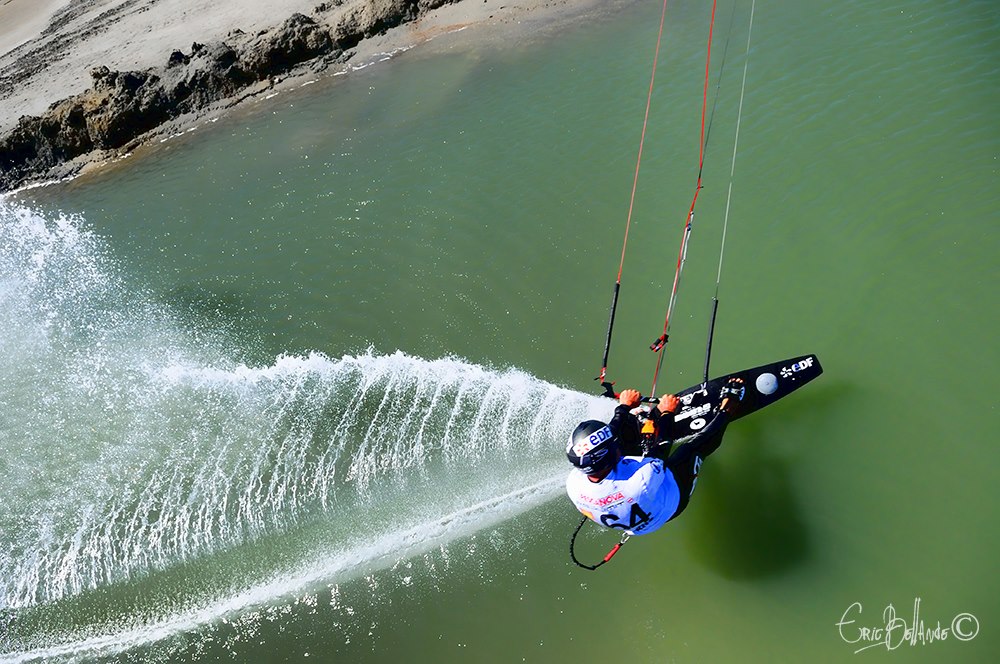
It’s a funny thing. Standing on the shoreline and looking out at any kitesurfer, you would be forgiven for thinking that riders seem to pootle along at no great pace. They are after all, usually a good distance away, with no still feature to relate their speed to, and they are usually tacking towards or away from you, meaning you don’t see them running the length of the beach. Don’t let this illusion fool you. Kitesurfing is fast! And can be very fast. So much so that almost since the sports inception, riders have been chasing down the coveted accolade of fastest sailor in the world, culminating in some interesting board design and kit combinations. Let’s take a closer look at the 2 main ingredients – the board and the kite.
Kitesurfing Boards – Choices For Speed
In pursuit of sheer speed, the limiting piece to a kitesurfer’s make up is usually the board, as this is what gives the most resistance. The standard board of choice for most riders is called a twin tip; a wonderfully versatile instrument that is great for anything from ‘mowing the lawn’, to doing a you have to be absolutely bonkers megaloop. Although with the right conditions a respectable pace can be reached with a twin tip, to truly join the speed club you need something a little more specialised.
An average rider on a twin tip would usually cruise at around 15 – 25mph but speeds of up to 35 – 40mph can be achieved in the right conditions. Take a look at the table towards the bottom of this post for the achievable speeds with different equipment.
The Race Board
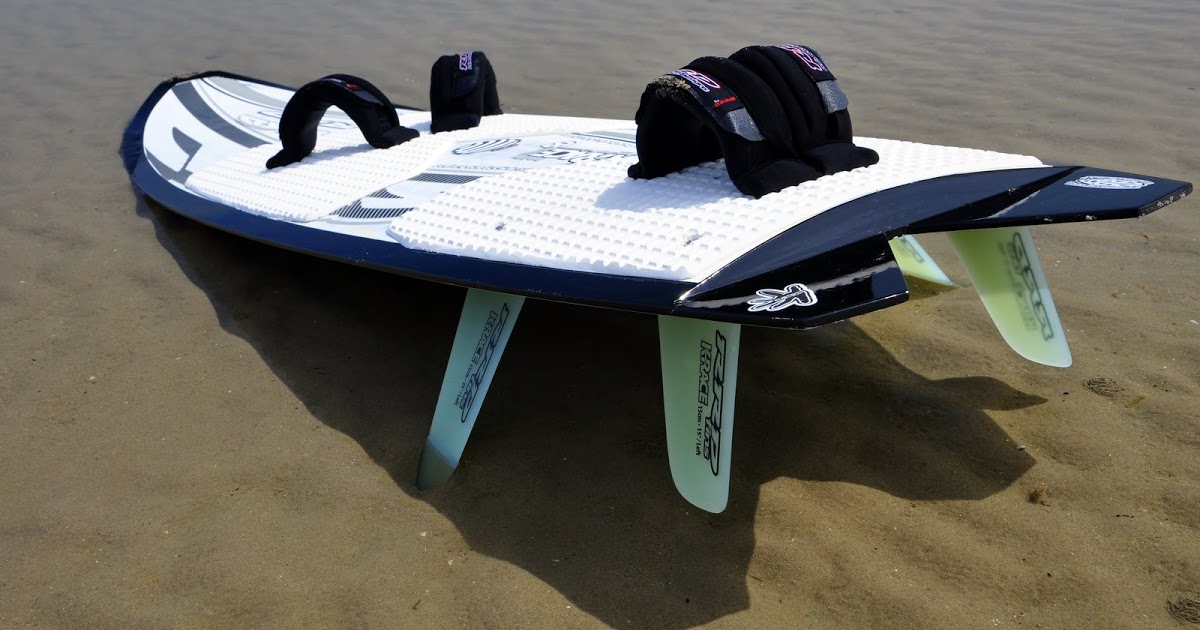
As the name suggest, this design of board was born out of competition. Resembling a large surf board that has been cut in half, with typically 3 to 4 large fins, this board works on the principle of lifting the board above the chop, and therefore drastically reducing the drag caused by the water surface. This lift is known as the ground affect. As the rider gains pace, a high air pressure is developed under the nose of the board, and as the speed builds, this pressure develops further back, eventually filling almost the entire space under board and lifting it above the surface. As there is very little board in the water, it is up to the large fins to stop the rider being pulled downwind by the kite. Cool!
The race board was a successful design, being built by many of the major manufacturers. However, about 5 years ago, it was swiftly swept aside by a new style that has seen its way into just about every water sport out there.
The Hydrofoil

Very similar to the race board in terms of board shape and size, this one has an underwater wing that is attached to the board with a big fin. Working on the same principle of lift, the hyrdofoil creates this using water pressure, rather then air pressure. As the rider gains speed, and applies a little back foot weight, the underwater wing increases its angle of attack to the direction of travel, lifting the rider out of the water, much as a wing pulls a plane off a runway when the nose lifts up. The fin is a very effective surface that enables the most acute into wind tack of any board. These are finely tuned instruments with very little room for error, requiring an exact technique that takes a lot of dedication to develop. The hydrofoil is now the board of choice in racing. It’s very fast and spectacular to watch, but is by no means the fastest.
The Speed Board
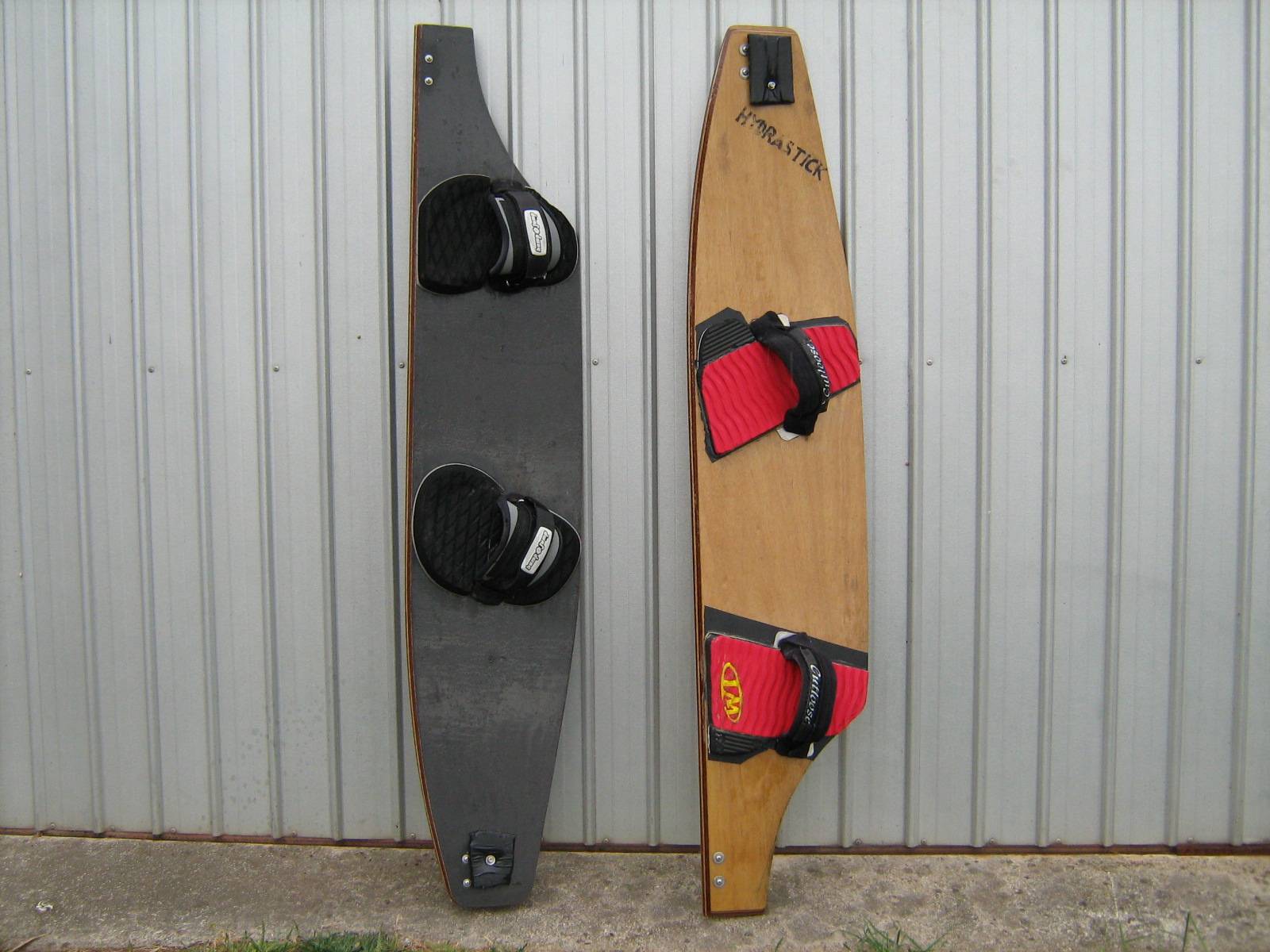
Designed for the sole purpose of flat out sheer speed, it looks more like a single ski than a board. These have been around for quite some time, and work on the same principle of the twin tip, though with far less displacement. Compared to the hydrofoil, these boards enable the rider to hold down much more power from the kite, and when this is applied to a slightly downwind direction, the speeds that can be reached are pretty nuts! The current record holder is Alex Caizergue, laying down an immense 57.97 knots (66.66mph). What a buzz! Windsurfing is close behind at a wacky 53.27 knots (61.26mph). You can imagine that at these speeds you want a flat as possible surface of water – not an easy combination when your looking for wind speeds of up to 50 knots.
How Fast Can Kitesurfers Go – Board Top Speeds
So how fast can kitesurfers go? We’ve compiled a table with the tops speeds recorded on specific boards with GPS.
| Board Type | Top Speed (mph) in perfect conditions |
| Twin Tip | 38 |
| Surfboard | 38 |
| Hydrofoil | 45 |
| Race Board | 55 |
| Speed Board | 67 |
So where can you do this?
The annually held Luderitz speed challenge is the home of watersports speed records, where speed daemons try their fibre glass against the strongest winds. A long, thin channel is dug along the beach, which when filled up with sea water provides the perfect flat water surface to let rip. However, the record has recently been snatched from Luderitz by Mr Caitergue, returning the title to the home of kitesurfing, France.

What about the kite?
Over the development of kitesurfing, the main focal point for manufacturers to flex their ingenuity and competitive advantage has been, perhaps not surprisingly, the kite. As such, there are many different designs and classes of kite available, classes which have been naturally paired with a style of riding. Although multiple lengthy blogs could be written on kite design, I’ll do my best at a succinct break down!
First Off
A kite’s canopy profile is the most important feature when considering how a kite will perform. This is broadly defined by something called the aspect ratio, which describes a kite’s depth in relation to its width. A low aspect kite has a deep canopy that typical narrows towards the tips, and a high aspect is of course the opposite; these are kites that have a thinner canopy that runs more or less constant to the tips. LEI stands for Leading Edge Inflatable. These are the pump up kites used by most kitesurfers.
LEI Low Aspect
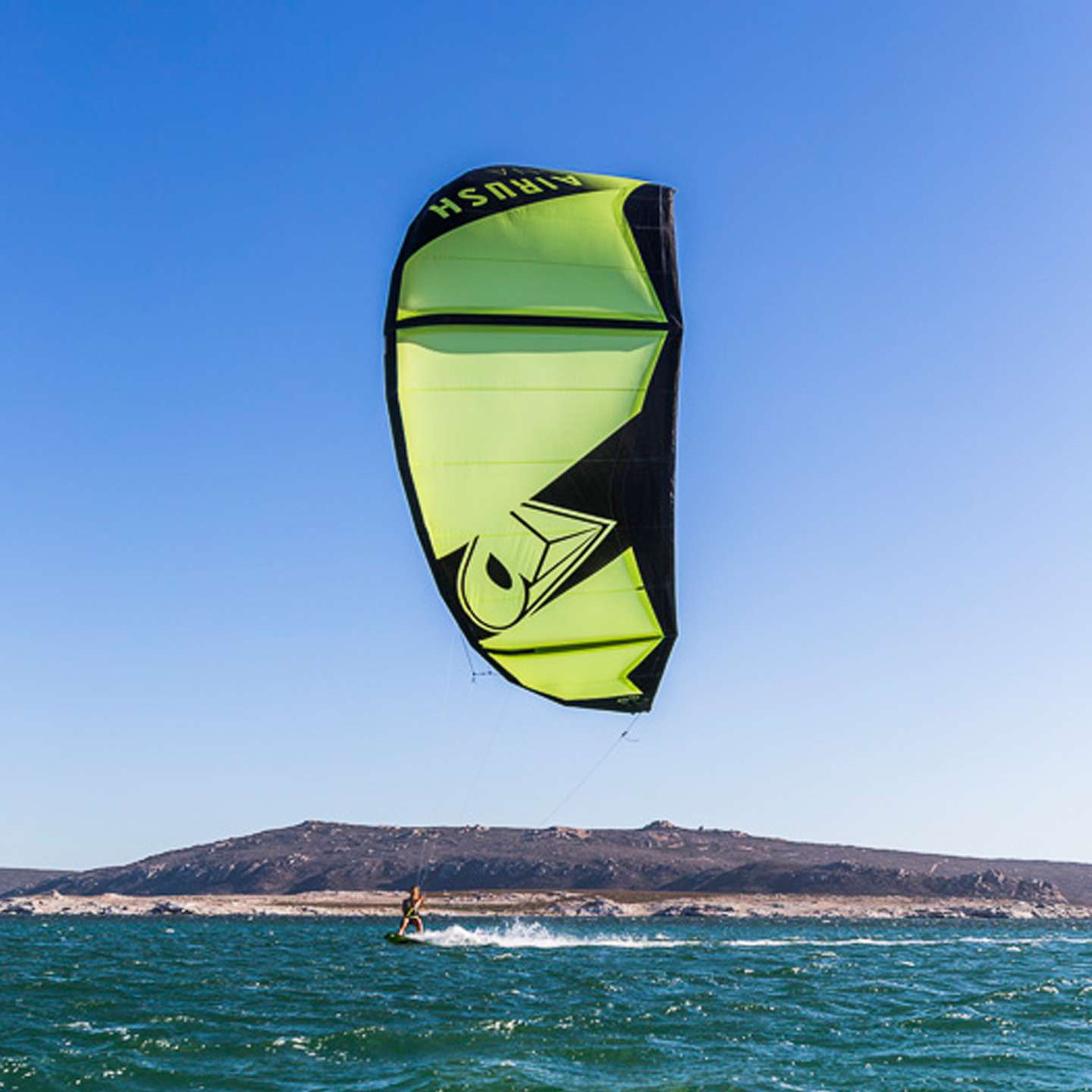
These fly comparatively slower through the wind window due to increased drag from their shape. As such, they are typically used in teaching, or for anyone who wishes to simply cruise along with a stable and easy to fly kite. They also have high wind ranges, meaning they can be used in a greater range of wind speed. Although very powerful, the deep canopy means they like to sit deep within in the wind window, which tends to pull the rider more downwind, rather then in a side wind direction. This means that more board displacement is required by the rider, increasing overall resistance; not great for higher speeds.
LEI High Aspect
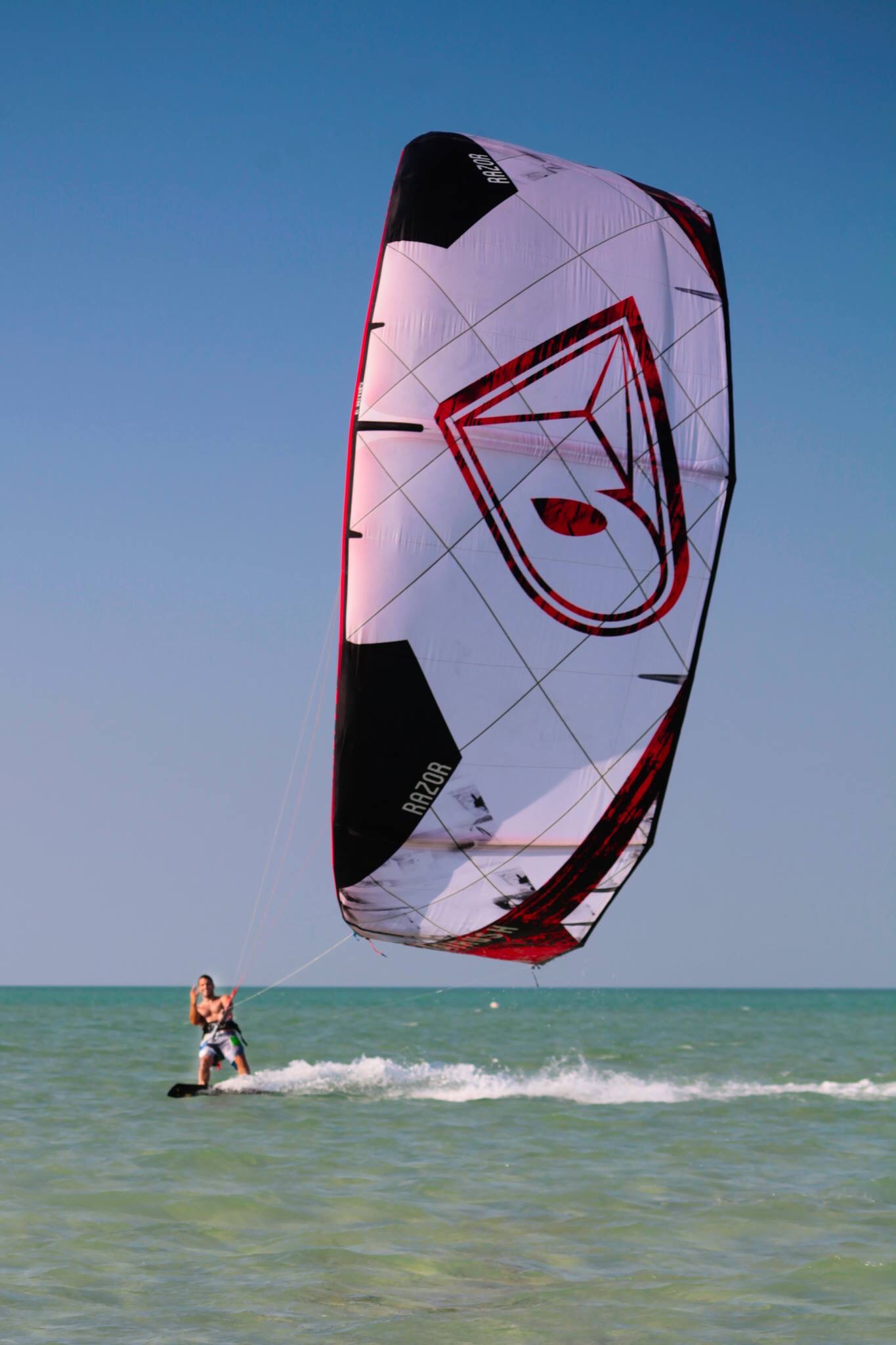
High aspect kites on the other hand like to sit on the side of the wind window, pulling a rider along rather then downwind. This benefit is greatly furthered by a something known as apparent wind, which these kits are particularly effective at making use of. Not getting too technical, this is the phenomenon of when the angle of incoming wind to any sail is altered by it’s own momentum, resulting in an improved upwind ability that builds with the kite’s speed. High aspects also have a smaller front profile then lower aspects which decreases their wind resistance. A thinner leading edge does make them weaker in the high winds in which they are typically flown, so to compensate, they tend to have a 5th line that connects to the middle of the leading edge. Used by the pro freestylers, these factors combine to also make a good choice for any high speed pursuer.
The vast majority of kites flown are a half way house between these two designs, doing their best to utilise the advantages of both ends of the spectrum. These are known as hybrid kites, and typically marry performance, usability and versatility into a user friendly package.
Foils
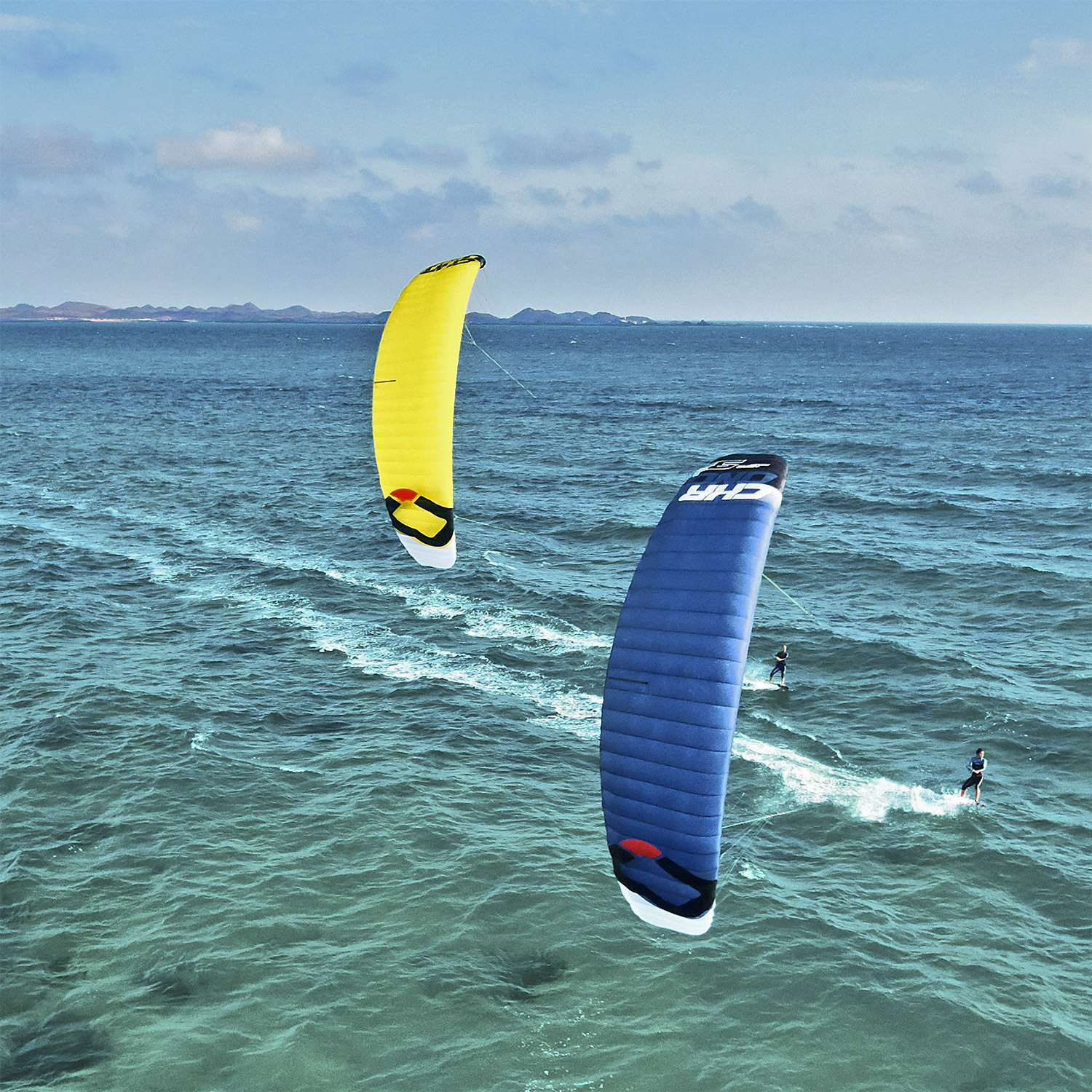
The last and by no means least of designs is the foil kite. As they are a variant of a paragliding sail, these have been around far longer then LEI kites, and although they have been used in land based kite sports, they have never been specifically developed for kitesurfing. The advent of the hydrofoil changed this. With the combination of an efficient board and light kite, Hydrofoiling has filled the light wind void that was previously unattainable, mainly due to the limitations of heavier LEI kites and less efficient boards. Foils perform superbly in light winds. They are constructed from much lighter fabric, and don’t require as much hardware as the LEI’s; parts such as bladders, valves and tubes. They tend to float through air, providing more lift to the rider. This is handy particularly when tacking on a foil board, as the more light footed you are, the easier it is. They are high aspect, lending great upwind performance and flying efficiency to the rider. They are however not a kite of choice for speed riders, simply because without the inflatable rib structure, they can’t handle high winds.
So as you can see, many different kites are available to satisfy the many variables of kitesurfing. What would be the choice for speed pursuit? A high aspect LEI, such as an F-one Bandit would hit the mark.
How About Technique?
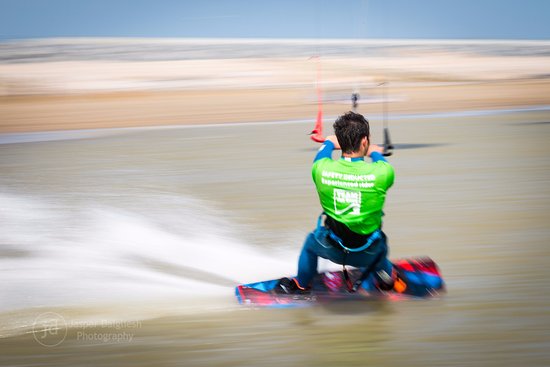
Previous discussion will give you an idea of some of the considerations to take into account. High winds, flat water, and specific boards certainly help, but in truth any rider can give it go, with any combination of equipment.
A word of caution: according to your responsibilities as a kitesurfer, always make sure the coast is clear, especially when travelling at high speeds, and that you are well aware of any underwater hazards that may be in your way. The guys hitting the speed strips are fully trained and build up to it. Check out some of their crashes if you’re feeling a little overconfident!
Here at Camber Sand, mid tide provides some great flat water channels. Alternatively, if the wind is strong and the waves big, in between the swell provides the flattest of all water. An easy way to keep track of conditions and tides is through our live feed – https://www.thekitesurfcentre.com/weather
To get the most power from the kite, fly it not far off from the water surface. The real key to speed is your tack. Coming off your edge, bare slightly down wind. The kite will seek for more power by sitting deeper into the wind window, and you will feel your speed increase dramatically. And to stop? This is not as easy at high speeds as edging your board is more tricky and tends to skip along the surface. Throwing your weight back, push down hard on your back foot and edge hard into wind while easing out the bar. You’ll notice the kite will ping forward, and the power will reduce giving you more control to bring it up to 12 o’clock, and your speed will decrease. Best to build up to this with good practice.
How fast can kitesurfers go? Very, very fast! Speed and kitesurfing are well acquainted. Check out these clips for some inspiration, and give it a go yourself. Just remember, be safe.
